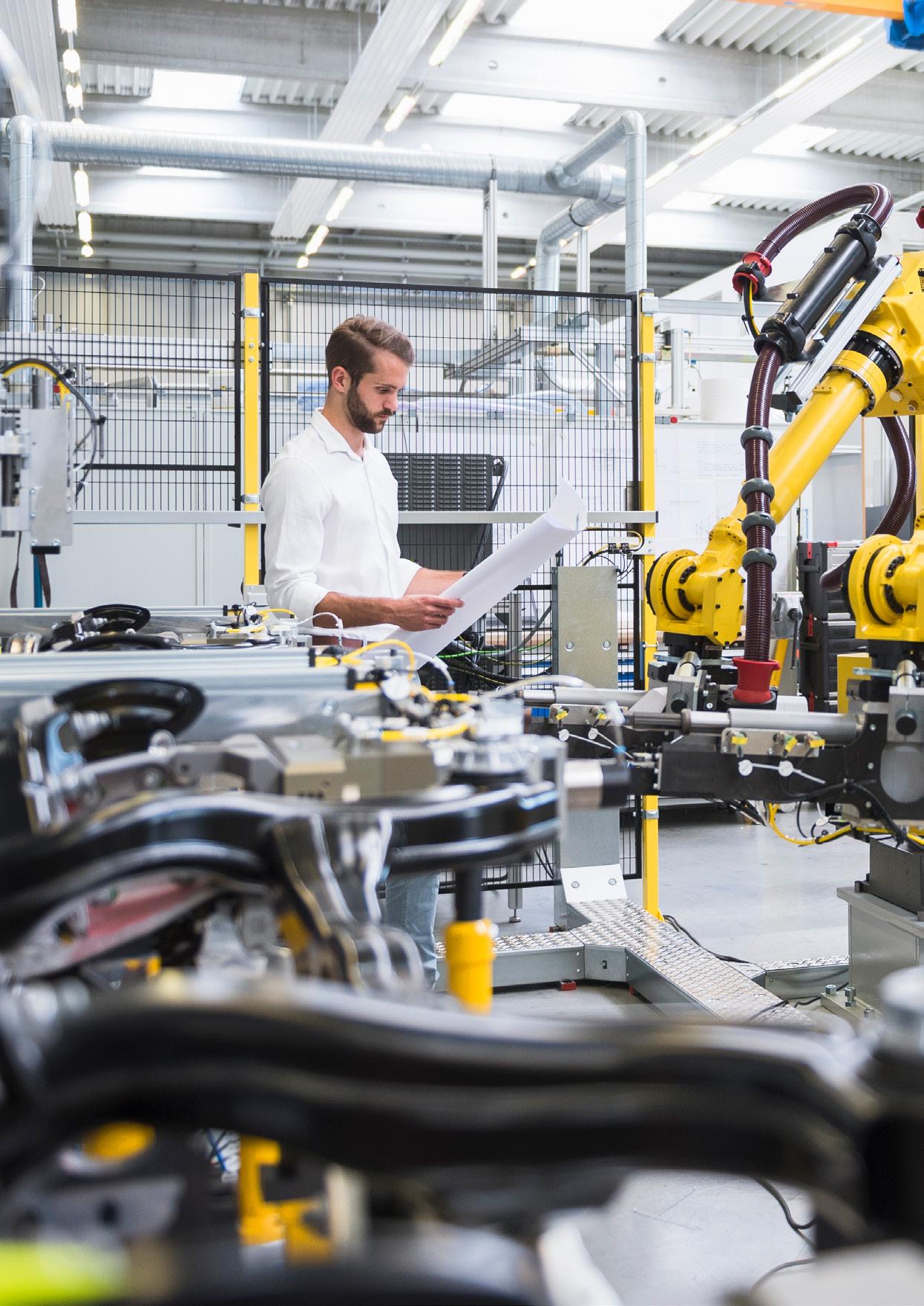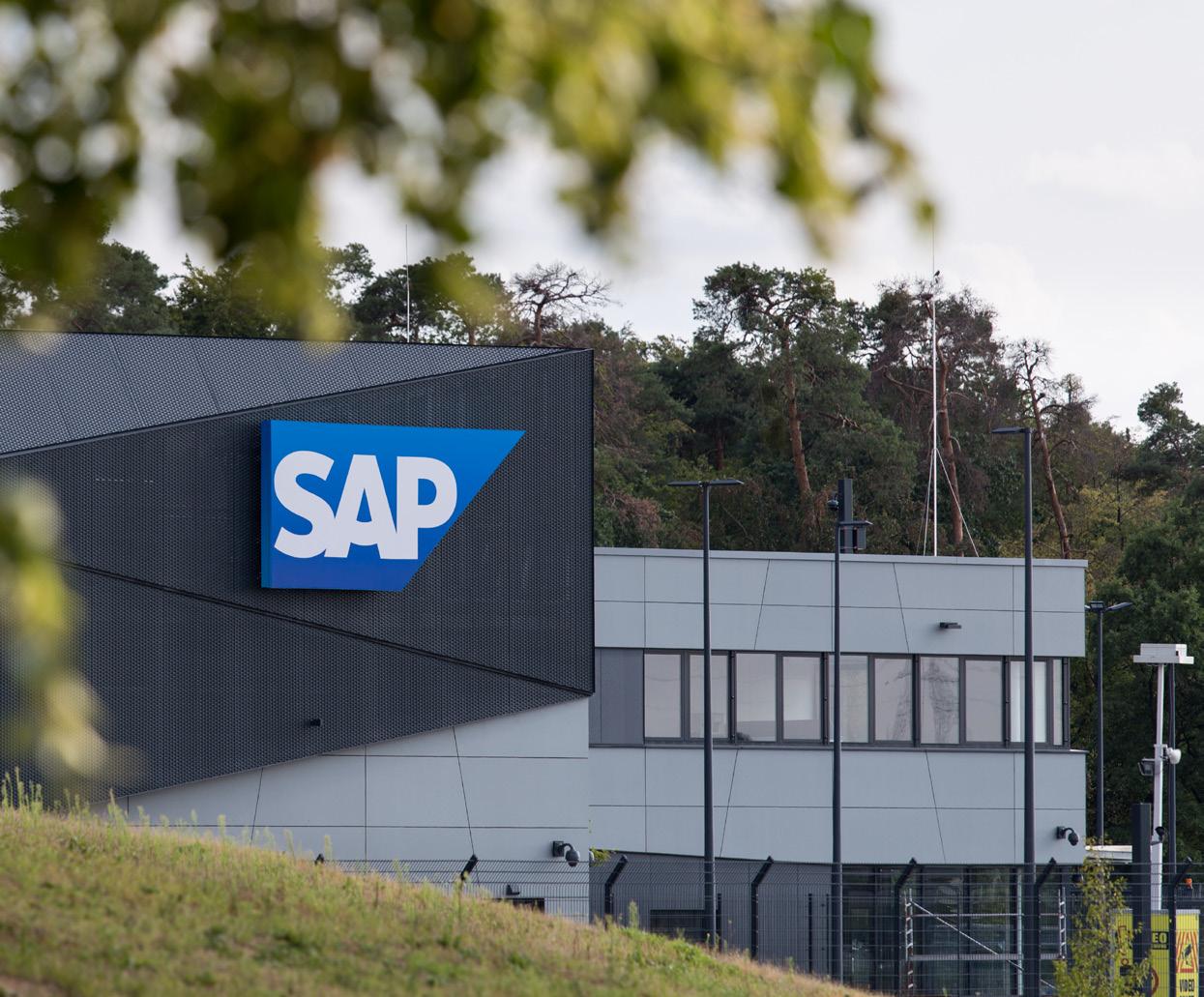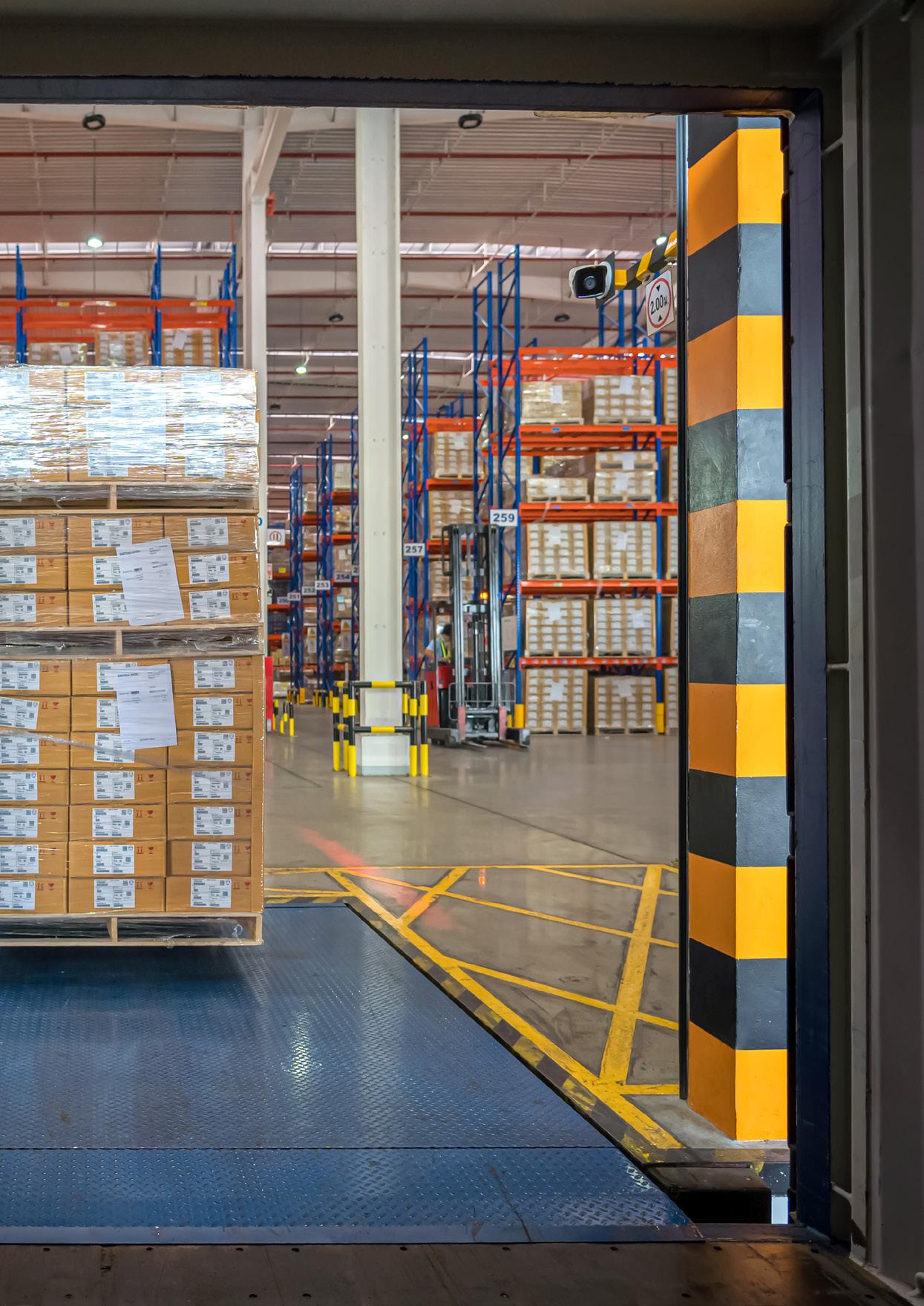SAP’s Sam Castro on AI and risk resilience in manufacturing


IN ASSOCIATION WITH:




IN ASSOCIATION WITH:



SAP is a global software provider and a leader for enterprise business process software, including solutions to manage supply chains. SAP provides technologies, supports the cloud and cloud platform environments, as well as artificial intelligence/machine learning (AI/ML) libraries, robotic process automation (RPA) and in-memory technology for high-end computers. SAP’s solutions for manufacturing execution and insights are part of a portfolio of products for supply chain management and leverages these technologies.
“We're an enterprise business software and a technologies company,” says Sam Castro Senior Director, Solution Management, LoB Digital Manufacturing.
Castro is a Senior Director at SAP and a part of the line of business manufacturing solution management team. The line of business covers the 27 manufacturing industries for which SAP provides software solutions.
“All of those industrial companies have needs around operations visibility, control and reporting,” Castro explains. “The different industries have different targets that they're after. Some are heavier on the asset side, some of them are heavier on product quality and yields, others are all about logistics and moving products around on-time through the supply chain.”
SAP is met with a diverse set of requirements and needs from its customers. Solution management takes these industry needs and applies them to market direction and invests them in the portfolio.
“We provide guidance on where to focus and the emphasis for development, and that strategy big picture where we want to take the products,” Castro explains.
In college, Castro completed a Bachelor's in computer engineering and a Master's in computer science at the Rochester Institute of Technology (RIT).
“I came from the hardware bridge to the software bridge very naturally after graduating,” says Castro. “I was dropped into the manufacturing floor because that is exactly where the hardware automation side bridges over into the software.”
He was faced with a great deal of information and digital signals from the automation layer and was tasked to turn it into information — how does SAP make that translation?
“I started at the very lowest level and moved my way through Lighthammer Software, which was acquired by SAP back in July 2005,” says Castro. “I worked my way through SAP into the role that I'm in today.”
“Being a sustainable enterprise means that you're an efficient enterprise”
SAM CASTRO SENIOR DIRECTOR, SOLUTION MANAGEMENT, LOB DIGITAL MANUFACTURING, SAP
 Sam Castro is Senior Director of Solution
Sam Castro is Senior Director of Solution
Today’s supply chain comes with constant uncertainty. So how are you preparing for whatever comes next?
Discover how Deloitte can help you enable a built-to-evolve digital supply chain that allows you to pivot quickly no matter what surprises the future brings.
Learn more about our Kinetic Supply Chain offerings for embedding flexible capabilities, intelligent insights, and sustainability from end to end.

Contact SAP@deloitte.com to get the conversation started.



Digitally driven business is an imperative in today’s uncertain landscape, but to thrive organizations will need digital supply chains that can anticipate disruption and evolve in lockstep with change all while prioritizing sustainability and responsible practices.
At Deloitte, such capabilities are part of our vision for the Kinetic Supply Chain a built-to-evolve supply chain enabled by a clean-core ERP, intelligent technologies, responsive cloud solutions, and an inclusive ecosystem of capabilities. Kinetic Supply Chain capabilities can allow you to see issues and opportunities before they arise and to take action sooner.
Ultimately, it’s about flexibility which can be elusive for many organizations. While optimizing supply chains over the years, some companies may have gained efficiencies without gaining the flexibility that they need in today’s environment. For example, they may have gotten down to one or two key suppliers instead of 20,
but they may not have the ability to sense the need for new suppliers, in the event of a regional fuel or material shortage, for example. They also may lack the ability to seamlessly and quickly integrate any new suppliers into their digital ecosystem. And at the same time, they may lack visibility into what those suppliers will mean for their carbon footprint, their sustainability goals, and their impact on the planet.
With a Kinetic Supply Chain covering planning, procurement, distribution, and operations you can proactively address many of those challenges and become “disruption ready.” More than a vision, the Kinetic Supply Chain is real, and you can see it in action at The Smart Factory @ Wichita At this full-fledged manufacturing facility, housed in a net-zero-impact building, Deloitte, SAP, and others are collaborating to solve real business needs and understand what it takes to build and scale flexible digital supply chains. Contact SAP@deloitte.com to schedule a visit or to get more insights on enabling a built-to-evolve digital supply chain.


When you talk about risk resilience at SAP, it’s about how to handle the real world, not setting up a plan and adhering to it day in and day out.
“You would like it to be like clockwork, for sure,” says Castro. “Where everything always aligns and meshes the way that it's supposed to all the time, every second. But we know that's not always the case.”
Weather events, pandemics, labour shortages or large sporting events can cause supply chain issues. For Castro, resiliency is the byproduct of having to have to handle these off-topic or out-of-sync scenarios and the ability to detect that you're out of sync
“Here are the enablers of AI and ML type algorithms that you can use and put together how you see fit”
SAM CASTRO SENIOR DIRECTOR, SOLUTION MANAGEMENT, LOB DIGITAL MANUFACTURING, SAP
with the original plan and react to it in a coordinated manner.
“The faster you can do that, the faster you can correct that problem,” says Castro. “Then you’re able to identify how often those deviations occur — that frequency of occurrence, that is your opportunity.”
Being able to quantify that opportunity and understand what those little deviations actually add up to, and how that impacts the business financially, is one of the key topics around what customers will hear about resiliency from SAP, says Castro.

“Sustainability is an overlay to that, sustainability is a byproduct of efficiency,” says Castro. “Being a sustainable enterprise means that you're an efficient enterprise.
TITLE: GLOBAL VICE PRESIDENT, CENTRE OF EXCELLENCE
INDUSTRY: MANUFACTURING

LOCATION: PENNSYLVANIA, US
Sam Castro joined SAP in July of 2005 with the acquisition of a small company called Lighthammer. He was responsible for implementation consulting, field enablement, custom development, and training for the core products (Illuminator, Xacute, UDS, CMS). These products have since evolved into the core SAP Connected Manufacturing products (Mfg. Integration & Intelligence or MII and Plant connectivity or PCo) that you see today.
Sam is now part of SAP LoB Manufacturing Solution Management group, which is directly responsible for strategy, direction, and customer adoption of all of the manufacturing products at SAP. He is specifically responsible for Industrial Analytics, that is SAP MII, Digital Manufacturing for insights, and Digital Manufacturing for execution, and he is the solution owner for Process MES products. In this role, he is actively working on mid- and long-term features and deliverables and how they are positioned with the broader SAP portfolio; he also provides guidance for product development investment.
If things are running effectively, things are running safely, and in a very energy-friendly manner as well.”
Castro views the impact of the cloud on manufacturing as a positive one.
“There are benefits for the IT team from a maintenance perspective and a continuous update and management of that software package,” he explains.
Cloud users are not dealing out of sync or outdated documentation, they’re not dealing with security issues that creep into the environment over time. Updates and patches are handled in real-time by the cloud hosting and software provider, that SaaS provider in the cloud environment. Castro views offloading that burden from the manufacturing layer and the IT teams that support them centrally and locally as a big deal for organisations and businesses.
“It keeps that barrier to entry for managing efficient production and tracking off of those teams, and it puts it firmly on the shoulders of the software provider. What does that mean for the business? It means that the end users aren't working with stale software. You're not working with software that has a UI from 15 years ago. You're not working with an ad-hoc analytical environment that used to be cool but now uses plug-ins and stuff that your browser doesn't support and ultimately causes it to have problems,” Castro explains.
As businesses are not dealing with these issues from the end user perspective, they're able to take advantage of a very modern, easy to consume and use software experience and focus on their core business functions.
“Despite not directly interacting with it, the work around you is what's driving that environment for you,” says Castro. “You're not putting that burden of three or four extra clicks on somebody, this is just software that's being driven from digital signals; from
integration, automation, and the tasks that the operator is performing.”
This newer approach to software design is how SAP leverages the industry investment companies have made and it is what's ultimately reducing the impact that end users have on that environment themselves.

There are different pillars within organisations, which have their own priorities. CEOs, CIOs, CTOs and CFOs are all working together and have overlapping needs that drive different business cases. But they need to have the right information at the top layer to make the right decision for the lowest layers within the organisation. This doesn't happen unless there is a framework in place for the distribution
and analysis of the data that is generated, from the very edges of the manufacturing and supply chain processes to the shop floor.
“If you don't have a way for that information to work its way up to the top, organisations
really struggle to understand where the priority needs to be,” says Castro.
For manufacturers to focus on business value versus technology, Castro believes that they need to intelligently manage profitability and investments. As a result of that additional profitability, they also need to protect that inflow of money and profitable behaviour for the company.
“Is that a CapEx investment? Is it an OPEX investment? Is it better granularity on product quality and an emphasis on quality for certain products or certain areas within a process that are very tricky and cumbersome?” asks Castro. “Maybe it's a new product that you're introducing and as a result, that process isn't fully stable yet. What is the emphasis in how

“Sustainability is an overlay to that, sustainability is a byproduct of efficiency”
SAM CASTRO SENIOR DIRECTOR, SOLUTION MANAGEMENT, LOB DIGITAL MANUFACTURING, SAP


much we put into that project to stabilise it? Those are the goals that are very coveted from the C-suite down, but they really are reliant from all edges of the supply chain and having that information roll all the way up.”
Enterprise-led manufacturing follows in tune with this exactly.
“The enterprise has to provide guidance to the manufacturing and supply chain teams as a whole,” says Castro. Where they want to see improvements and how much they're willing to invest in those improvements, what's it worth? How do you build that community up?”
To understand the role that manufacturing plays in an organisation’s reinvestment strategy, you must first understand where it matches up with other locales in the manufacturing environment.

112.6K+ employees worldwide (Sept. 30, 2022)
160 number of countries
22K+ partner companies
245mn+ Subscribers in SAP’s cloud-based user base
“Manufacturing isn't just a single-faceted environment. It's often made up of plants that have been around for a long time, some that were built up by your own organisation, some that came into the organisation through acquisition,” says Castro. “So you see different heritages and mentalities. They have this communal approach for how the plant manager wants to lead that group in the business forward.”
At SAP, being able to take advantage of AI standardisation in a universal way is important.
“You can take and apply these very technical algorithms in order to get information off them. Here's the technology, here are the enablers of data, here are the enablers of AI- and ML-type algorithms that you can use and put together how you see fit,” says Castro. “Then that carries over into
the application side, which says, we know we have these technologies, we know that this data is being generated from our transacting processes, so we have our own structured analytics pieces and now we can use these structures to drive our own models to influence our execution process.”
SAP has global partners, as well as local partners, who rely on its technology. When Castro talks about partnerships, he does not put one partner over another.
“We try to keep the community as open as possible,” he says. “We try not to promote one partner over another, because they're all very important to us.”
The openness of SAP and the openness of its software is for its customers to take advantage of, but also for their partners to put their own industry expertise behind.
“It is what gives SAP the power that we have to leverage in our own technologies to leverage partner-led innovation using those technologies to intelligently power our applications.”

“ You want it to be like clockwork, where everything always aligns. But we know that that's not always the case”
SAM CASTRO SENIOR DIRECTOR, SOLUTION MANAGEMENT, LOB DIGITAL MANUFACTURING, SAP



